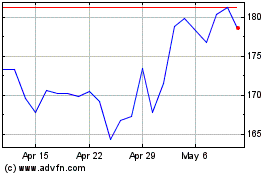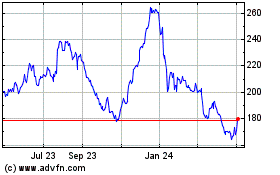Physical Strength of Pilots Emerges as Issue in Returning 737 MAX to Flight
June 19 2019 - 8:38AM
Dow Jones News
By WSJ City
Efforts to get Boeing's 737 MAX jetliners back in the air have
been delayed in part by concerns about whether the average pilot
has enough physical strength to turn a manual crank in extreme
emergencies.The problem has been the focus of weeks of engineering
analysis, simulator sessions and flight testing by the plane maker
and American air-safety officials.
KEY FACTS
--- Turning the crank moves a horizontal panel on the tail,
which can help change the angle of the plane's nose.
--- Under certain conditions, including at high speeds with the
panel at a steep angle, it can take a lot of force to move.
--- Regulators worry female aviators -- who typically have less
upper-body strength than male aviators -- may find it difficult to
turn the crank.
--- To complicate things, the same emergency procedure applies
to the generation of the jetliner that preceded the MAX.
--- These planes are the backbone of short- and medium-range
fleets for many carriers.
Why This Matters
All of the 737 MAX's underlying safety questions have to be
resolved before the FAA can put the grounded fleet back in the air,
according to US and European aviation officials.
Neither Boeing nor regulators anticipate design or equipment
changes to result from the review. But the issue has forced a
reassessment of some safety assumptions for all 737 models.
A fuller story is available on WSJ.com
WSJ City: The news, the key facts and why it matters. Be deeply
informed in less than five minutes. You can find more concise
stories like this on the WSJ City app. Download now from the App
Store or Google Play, or sign up to newsletters here
http://www.wsj.com/newsletters?sub=356&mod=djemwsjcity
(END) Dow Jones Newswires
June 19, 2019 08:23 ET (12:23 GMT)
Copyright (c) 2019 Dow Jones & Company, Inc.
Boeing (NYSE:BA)
Historical Stock Chart
From Mar 2024 to Apr 2024

Boeing (NYSE:BA)
Historical Stock Chart
From Apr 2023 to Apr 2024
